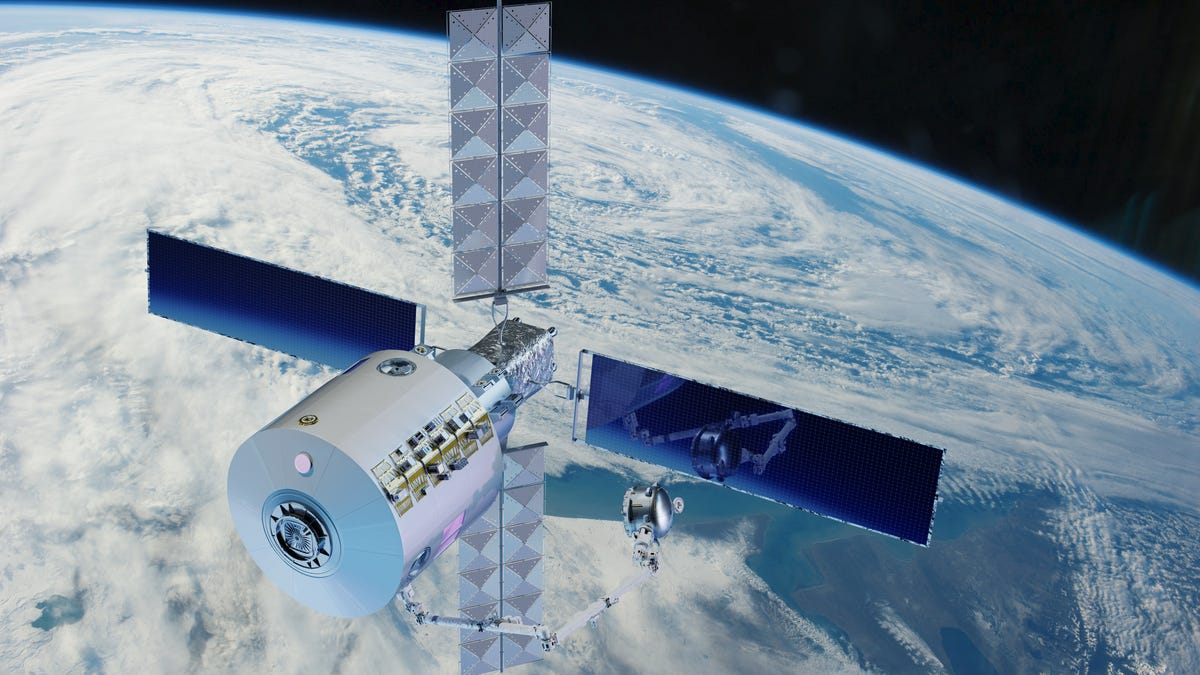Starlab Space’s forthcoming space station is so big and heavy that only the formidable SpaceX Starship megarocket can launch it into orbit, but the one-time delivery option comes with distinct benefits.
Astronomers Could Soon Get Warnings When SpaceX Satellites Threaten Their View
Starlab Space, like several other commercial ventures, is racing to deliver a commercial space station to orbit in anticipation of the International Space Station’s retirement in 2030. The company, a joint venture between Colorado-based Voyager Space and Europe’s Airbus, announced on Wednesday that it has secured a launch provider for the mission—and it’s a company you may have heard of.
It’s SpaceX, of course. The Elon Musk-led aerospace firm will use its Starship megarocket for the required lifting duties owing to the anticipated size and weight of the space station, eponymously named Starlab. “SpaceX’s history of success and reliability led our team to select Starship to orbit Starlab,” Dylan Taylor, chairman and CEO of Voyager Space, said in a statement, adding that “Starlab will be launched to orbit in a single flight by Starship.”
Related article: Voyager Space and Airbus to Collaborate on Commercial Successor to the ISS
Big rockets allow you to do big things. In this case, they make it possible to deliver a 26-foot-wide (eight-meter) space station built from stainless steel. Manfred Jaumann, vice president of low Earth orbit and suborbital programs at Airbus, disclosed these specifications at a German tech expo this past November, saying Starlab will be too large and heavy for any launch vehicles currently in service or being developed, save for Starship, as SpaceNews reports. Starlab’s exact weight is not yet known. But Starship, also made from stainless steel (I’m sensing a fetish here), has an anticipated lift capacity of 150 metric tons to low Earth orbit, a destination otherwise known as LEO.
Of course, Starship is not yet ready for prime time. The megarocket has performed two test flights to date, with a third planned in February. Pinpointing an exact timeframe for the rocket’s operational flight certification is difficult given its highly experimental nature. Powered by 33 Raptor engines, this two-stage rocket is the largest and most powerful ever constructed and is designed for full reusability.
Starlab, set to reach LEO in 2028, will be fully equipped on the ground for fuss-free operations, eliminating the need for space assembly, thus saving time and costs. As Voyager Space president Matt Kuta told Payload: “It cannot be understated, the significance of the single launch to orbit, not two-three-four launches, to close the business plan.”
Once operational, Starlab will continually house a crew of four astronauts conducting a range of experiments. Utilizing its orbital position, these experiments will take advantage of conditions like microgravity and exposure to the radioactive space environment. Starlab Space intends to use this station to cater to space agencies like NASA and the European Space Agency (ESA), various researchers, and commercial companies.
Over the last year, the Starlab team has achieved key milestones such as Systems Requirements and Definition Reviews, along with Human in the Loop testing. The company is planning collaborations with ESA, Hilton Hotels, and The Ohio State University. Starlab Space has undergone significant changes recently; Lockheed Martin has been replaced by Northrop Grumman, which will provide its autonomous Cygnus spacecraft for cargo missions. In anticipation of its future space station needs, NASA has supported this initiative by investing $217.5 million in the consortium.
For more spaceflight in your life, follow us on X (formerly Twitter) and bookmark Gizmodo’s dedicated Spaceflight page.
